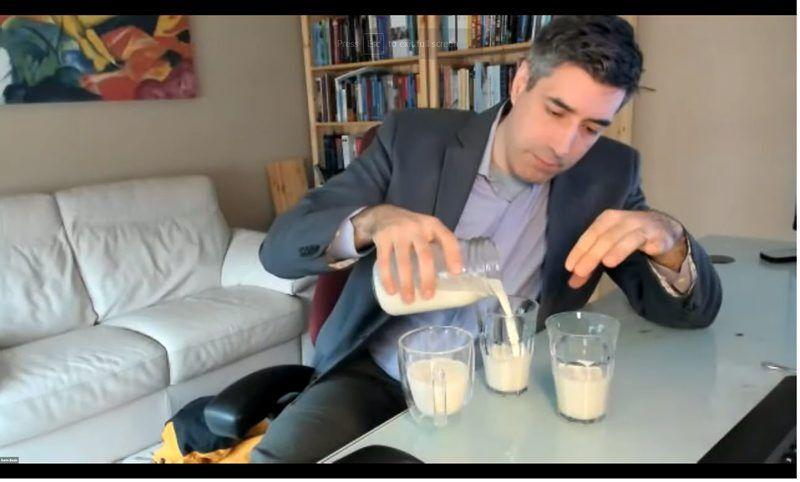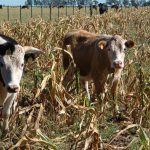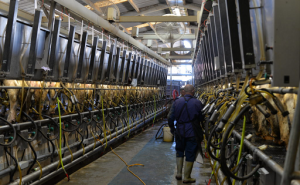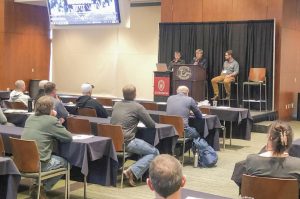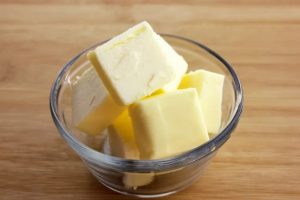
The producer price differential is hamstrung by Federal Milk Marketing Order formulas that are outdated and not working as hoped, said Marin Bozic, a University of Minnesota ag economist.
Bozic spoke in an April 15 web meeting with the Minnesota Milk Producers Association and Wisconsin’s Dairy Business Association.
The producer price differential is one step in calculating farmers’ milk checks. In simplistic terms, it is a calculation of the difference between Class III (cheese) prices and the other three milk classes.
This number is often positive, though negative PPDs have been a possibility since the 2000 reform of the Federal Milk Marketing Order system.
And until last year, negative PPDs were usually blips caused by a rally in cheese prices, Bozic said.
Through March, though, the differential has gone negative nine of the past 10 months in at least some federal orders. This period includes the lowest lows in the history of the pricing mechanism.
In the Northeast federal order, the PPD plunged to -$5.46 per hundredweight last July after running more than $1 per hundredweight in the black during the first five months of 2020.
The Northeast PPD was a positive 35 cents per hundredweight in March.
Still, Bozic said, a handful of market and regulatory shifts since 2010 have depressed PPDs and could continue to do so.
Those changes reduced the March PPD in the Northeast by an estimated $1.51 per hundredweight compared to decade-ago conditions, Bozic said in a paper with economist Christopher Wolf of Cornell University.
Milk Consumption
While milk is priced based on the product it is used to make, farmers aren’t paid strictly on their milk’s end use.
The federal orders shift around some of the money to reduce the pay disparity between farmers whose milk goes to low-priced products and those who produce for high-value categories.
“It’s a noble concept in its core,” Bozic said.
But the federal order system was built on the assumption that Americans would consume huge volumes of fluid milk.
Fluid, or Class I, is usually the most valuable category and is therefore used to supplement payments to farmers in the other three classes of milk.
But the share of milk pooled on the federal orders that goes to the fluid market has dwindled. From over 60% at the end of World War II, it fell to 45% in the late 1990s and to just 28% two years ago.
“This is just not enough fluid milk to make the order system work the way it worked even 30 years ago, let alone 60 years ago,” Bozic said.
Bozic’s modeling suggests that milk consumption trends alone have cut the Northeast PPD by 25%, or 47 cents per hundredweight, in just the past decade.
While consumers have been cutting back on fluid milk, they have been eating more cheese and other manufactured dairy products.
PPDs become negative when the Class III (cheese) price rises much above Class IV (butter and milk powder).
That spread was extremely high last year, driven by the large cheese purchases from USDA’s Farmers to Families Food Box program.
As a result, some organizations have suggested that the government increase butter purchases this year to shrink the gap between classes III and IV. Even if USDA takes that course, longer-term changes to the federal orders are needed on this front, Bozic said.
Depooling
In another indication that the federal order system was designed with fluid milk as the cash cow, Class I milk must be pooled on the order, but participation is optional for the other milk classes.
When Class III is more valuable than Class I, it’s the cheesemakers, not the fluid plants, who have to give up revenue to subsidize the other classes.
“We never, ever intended that it will be the Class III cup that would have to be pouring over revenue to other cups,” Bozic said, using glasses of milk to illustrate his point.
As a result, high Class III prices give cheese processors an incentive to depool, or take their milk out of the federal order system. It’s not selfish; it’s just how the system was set up, Bozic said.
To reduce depooling, some people have suggested tightening the rules for cheese plants to rejoin the federal order once they have left, but “the only thing that you will do that way is push them out more permanently,” Bozic said.
Unintended Consequences
The PPD has also weakened because of unintended consequences of federal order rules.
One of the challenges is rising milk protein production on the farm, which is a plus for milk quality but a minus for PPDs, Bozic said.
Class I bottlers pay into the pool based on pounds of skim milk, which uses a standardized amount of protein. But when the pool pays out to the bottlers, it counts their actual protein amount in the price.
This formula increases what bottlers draw from the pool over time without increasing what they pay in, and that reduces the money available for the PPD, Bozic said.
The other unintended consequence — and a key dairy lobbying point in Washington right now — comes from the 2018 Farm Bill.
Before that law, the Class I milk price was the higher of the Class III and IV advanced skim prices. Processors found this format complicated for hedging, so dairy groups got the price changed to the average of classes III and IV plus 74 cents.
The National Milk Producers Federation, which supported the change, had hoped the development would be revenue-neutral, but given the market upheaval of the pandemic, it was not.
The group estimates that farmers have lost $725 million because the “higher-of” formula was replaced.
Now National Milk is asking USDA for another change to the formula. This plan would adjust the Class I mover (the 74 cents) every two years based on market conditions over the last 24 months. The current mover would remain the floor.
A group of Midwestern dairy organizations, including the sponsors of Bozic’s webinar, have announced a competing proposal called Class III Plus.
This plan would tie the Class I price to the Class III price plus an adjuster, and would scrap advanced prices that are set well ahead of time.
Bozic said he doesn’t see enough support among dairy industry players for USDA to consider returning to the higher-of formula.
